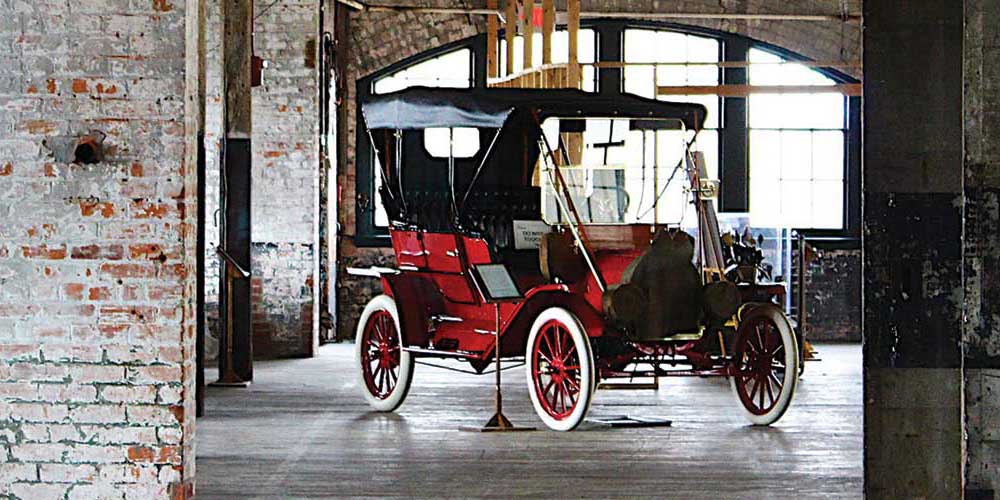by A. Wayne Ferens
Images from Ford Motor Company Archives and the Ferens Collection
Published 7.26.2023
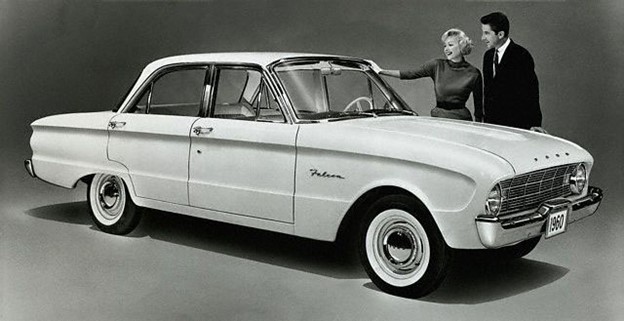 The 1960 Ford Falcon
The 1960 Ford Falcon
The first-generation Ford Falcon (1960-1963) was the brainchild of Ford Motor Company’s Robert S. McNamara. He commissioned a team to create what would be Ford’s entry into a segment of small/economical vehicles that became known as the "compact car." When introduced, it's light and strong unibody construction on a 109.5-inch wheelbase offered a wide choice of utilitarian models to suit most needs. It was initially powered by a small lightweight 95 horsepower 144 cu.in. Mileage Maker I-6 engine with a single-barrel carburetor. It was a sales success for Ford, initially outselling rival compacts from General Motors and Chrysler.
To add some sizzle to the Falcon lineup for the emerging youth market, a new 164 horsepower 4.3L, 260 cu.in. V-8 powered Sprint model with a four-speed transmission was introduced to the motoring public at the Monte Carlo Rally held in January 1963. Rally events were popular in the 1960s, and the most significant car rally in the world was the Rallye Monte Carlo. Ford entered a fully-sponsored and supported team of Falcons in the 1963 & 1964 events. George Merwin was selected as Ford's Competition Manager, was instructed to put together a three-car team in only a few months with the objective of competing well enough to be able to produce favorable publicity for the company. That was quite a task from a machine that had never been tested in a grueling European-type rally event.
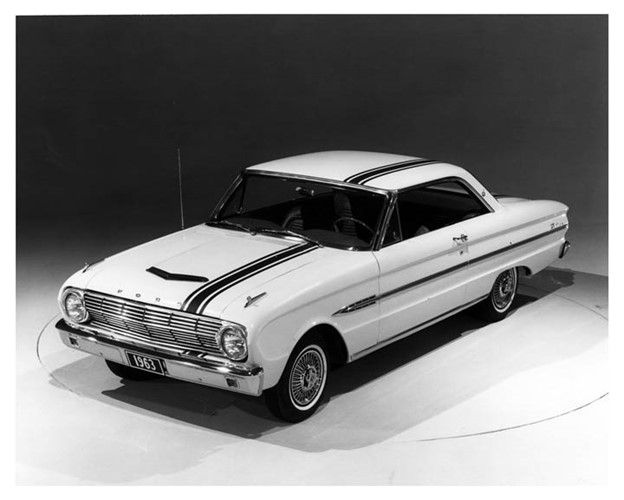 The 1963 Ford Falcon Sprint
The 1963 Ford Falcon Sprint
Jeff Uren was previously the Competition Manager for Ford of England and was selected as the team manager due to his experience with British Rally Teams. With basically an unlimited budget from Ford, three specially-equipped V-8 Falcons were prepared by Holmen & Moody in Charlotte, NC and entered with two teams of male drivers and navigators and one team of women in the Coupe Des Dames. The 1963 teams were:
- Bosse 'Bo' Ljungfeldt of Sweden (driver) and Gunnar Haggbom of Sweden (navigator) in car #223;
- Peter Jobb of Great Britain (driver) and Trent Jarman of the US (navigator) in car #221;
- Ann Hall of Great Britain (driver) and Margaret MacKenzie of Scotland (navigator) in car #222.
After four treacherous days and three grueling nights driving 2500 miles over ice, snow, freezing fog and endless curves, the #223 Falcon Sprint placed 42nd overall, and car #221 was 34th overall of the 307 entrants. It defeated every car, regardless of class, on the brutal Chambery-Monte Carlo final leg, set the best time among all finishers in all of the six special test sections, and out-performed every sedan in the dramatic three-lap elimination on Monaco's round-the-houses course. Bo Ljungfeldt in car #223 was the fastest car and driver in the rally (below), but got off to a poor start mainly from blocked roads. This caused the cars to exceed the maximum allowable lateness. The Hall/MacKenzie entry was one of the cars that was over the limit during this initial phase of the rally.
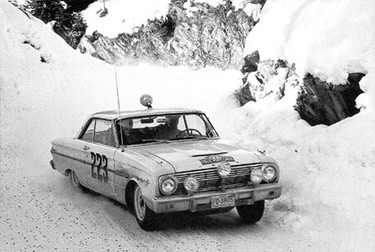 The Ford Falcon Sprint in competition
The Ford Falcon Sprint in competition
In 1964, Ford provided Alan Mann Racing in the U.K. with its first substantial contract to prepare eight second generation Falcons for the rally. The photo below shows cars in various stages of preparation. The Sprints were powered by the new 4.7L, 289 cu.in. engine equipped with dual Carter 4-bbl carburetors prepared by Ford's Engine & Foundry Division, rated at 285 horsepower. A special oil cooler and lighter fiberglass body panels were also used. There were 299 cars entered for the start of the 33rd Rallye Monte Carlo.
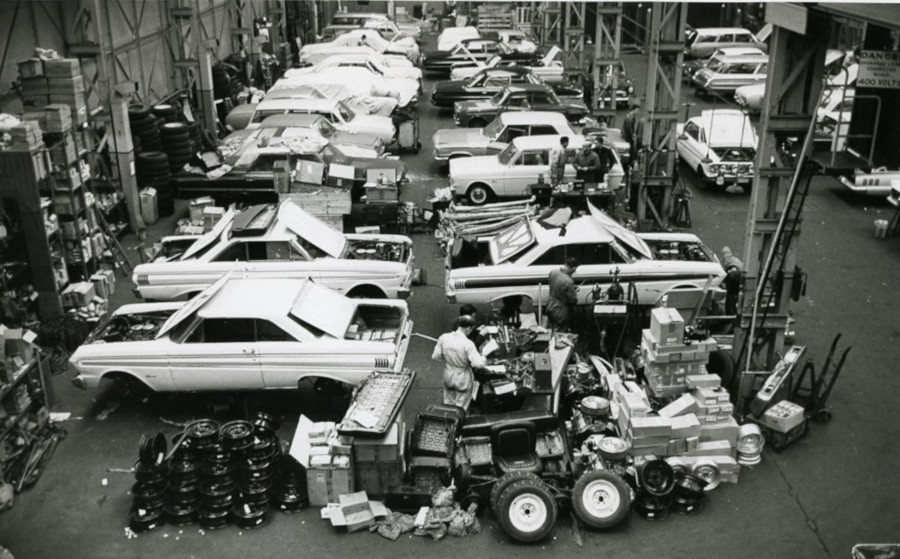 The Ford racers in the garage
The Ford racers in the garage
Some 2,700 miles and 3 1/2 days later, only 163 cars were still in the rally when the field struggled into Monaco, but that included all eight of the Ford Falcons. The final results in the Monte Carlo Rallye gave Falcon second place overall, and they would have placed first but for a handicap favoring the smallest cars. The two toughest classes Falcon entered in were Class 8 of the Touring category (placing first) and Class 5 of the much tougher Grand Touring category (placing first and second). In the Rallye's five special Alpine sections, Falcon was first overall in four and tied for first in one. Falcons placed first and second in the final three-lap test on the Monte Carlo race circuit. The overall best performance was from team driver Bo Ljungfeldt and F. Sager in car #49.
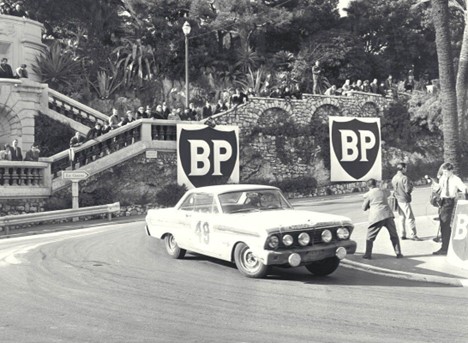 Ford competing in Monte Carlo
Ford competing in Monte Carlo
In 1966, the third and last generation (discontinued in 1970) of the Ford Falcon was introduced. Over the next several years, it met its toughest competition right here at home in the USA. That competition was called the Ford Mustang!
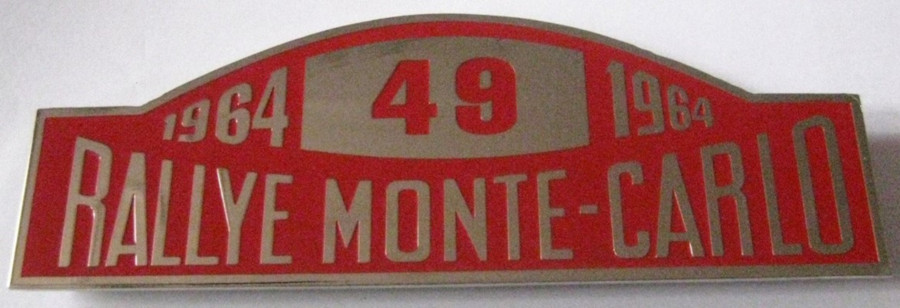 The ID plaque from the Bo Ljungfeldt Rally Falcon
The ID plaque from the Bo Ljungfeldt Rally Falcon


